Your entryway isn’t just a transitional space—it’s the first chapter of your home’s story. Studies from environmental psychologists at the University of Texas have found that visitors form up to 90% of their impression about a home within the first 15 seconds of entering, making your entryway perhaps the most crucial area for thoughtful design.
As we move through 2025, modern entryway design continues to evolve, blending sleek aesthetics with practical functionality. Whether you’re working with a spacious foyer or a compact apartment entrance, creating a welcoming space that reflects your personal style while serving your daily needs is entirely achievable.
In this comprehensive guide, we’ll explore 20 innovative and practical modern entryway ideas that balance form and function, helping you transform this high-traffic area into a stylish introduction to your home.
The Foundation: Choosing the Right Layout
The foundation of any successful entryway design begins with honest assessment and thoughtful planning. Before selecting furniture or accessories, consider the fundamental elements that will define your space.
1. Space Assessment: Working with What You Have
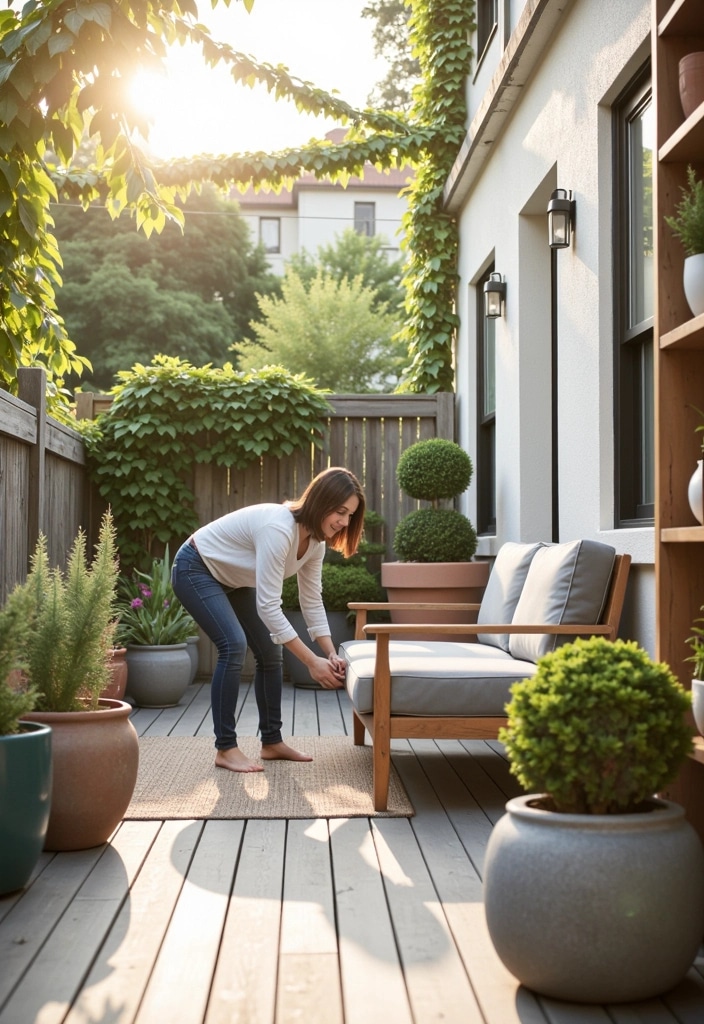
The first step in creating an effective entryway is acknowledging your spatial reality. According to interior designer Sarah Richardson, “The most successful entryways are those that embrace their limitations rather than fighting against them.”
For small entryways:
- Think vertically—utilize wall space for hooks, shelving, and art
- Choose furniture with minimal footprints (wall-mounted options when possible)
- Consider floating elements that create an illusion of more floor space
For open-concept entryways:
- Define the area using visual boundaries like area rugs or furniture groupings
- Create a visual separation through lighting zones
- Use consistent design elements to connect the entryway with adjoining spaces
Interior architect Thomas Müller of Studio MM transformed a challenging 4’x6′ entryway in a Brooklyn apartment by installing a custom floor-to-ceiling storage solution with a built-in bench and mirror. “By utilizing the vertical space and keeping the footprint minimal, we created a fully functional entryway in what was essentially a glorified hallway,” notes Müller.
2. Durable Flooring Options for High-Traffic Areas
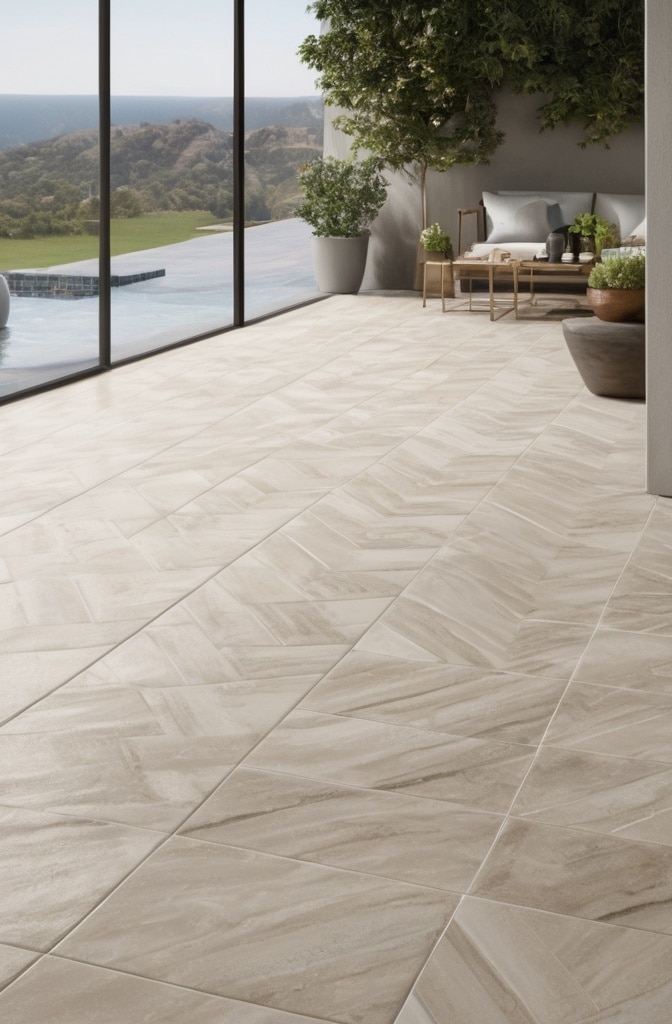
Your entryway flooring needs to withstand more abuse than perhaps any other surface in your home. Between outdoor elements, foot traffic, and the occasional dropped keys or bags, durability is paramount.
A 2024 study by the National Flooring Association found that entryway flooring typically experiences 3-5 times more wear than other areas of the home, making material selection critical.
“The entryway is no place to skimp on flooring quality,” advises flooring specialist Ramona Chen. “Invest in materials rated for commercial use, even in residential settings, particularly for homes with children, pets, or in climates with harsh weather conditions.”
Designer tip: Creating a visual boundary with a flooring transition can effectively define your entryway in open floor plans. Consider a decorative tile inlay or a subtle change in installation pattern rather than an abrupt material change for a sophisticated approach.
Creating Visual Impact
With the foundation established, focus on elements that create immediate visual impact and set the tone for your entire home.
3. Statement Lighting That Transforms Spaces
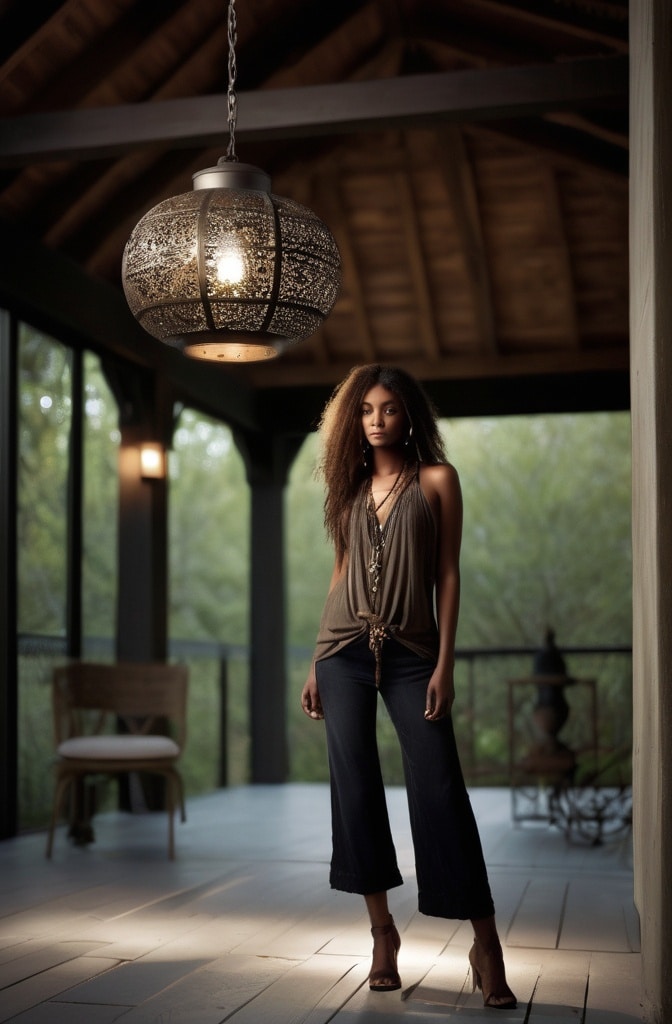
Lighting in an entryway serves dual purposes: illumination and ambiance creation. Modern entryway lighting should be both functional and sculptural.
According to lighting designer David Weeks, “The ideal pendant height for entryways follows a simple formula: allow 7 feet of clearance from the floor, plus 3 inches for each foot of ceiling height above 8 feet.” This ensures proper scale while maintaining necessary headroom.
For truly effective entryway lighting, consider a layered approach:
- Ambient lighting (overhead fixtures) for general illumination
- Task lighting (sconces, table lamps) for specific functions like checking appearance or finding keys
- Accent lighting to highlight architectural features or artwork
Smart lighting systems have become increasingly popular in modern entryways, with systems like Lutron and Philips Hue allowing homeowners to program lighting scenes for different times of day or arrivals. A “welcome home” setting that gradually brightens the space as you enter can transform the daily arrival experience.
4. The Power of Color Psychology in Entryways

The colors you choose for your entryway can significantly influence the emotional response of both residents and visitors. Design psychologist Dr. Sally Augustine explains, “Entryway colors set expectations for what’s to come and can subtly affect mood and behavior.”
Modern entryways often follow the 60-30-10 rule:
- 60% dominant color (typically walls)
- 30% secondary color (larger furnishings)
- 10% accent color (accessories and art)
Contemporary color schemes trending in 2025 entryways include:
- Warm neutrals like greige and oatmeal paired with terracotta or rust accents
- Cool sage greens with natural wood tones
- Deep, moody blues or greens with brass or gold metallic
- Black and white combinations with textural elements for depth
For open-concept homes, color zoning—using color to visually define spaces—has become an essential technique. “Think of color as an invisible wall,” suggests color specialist Maria Killam. “It can create boundaries and flow without disrupting the open feeling.”
5. Accent Walls That Tell Your Story
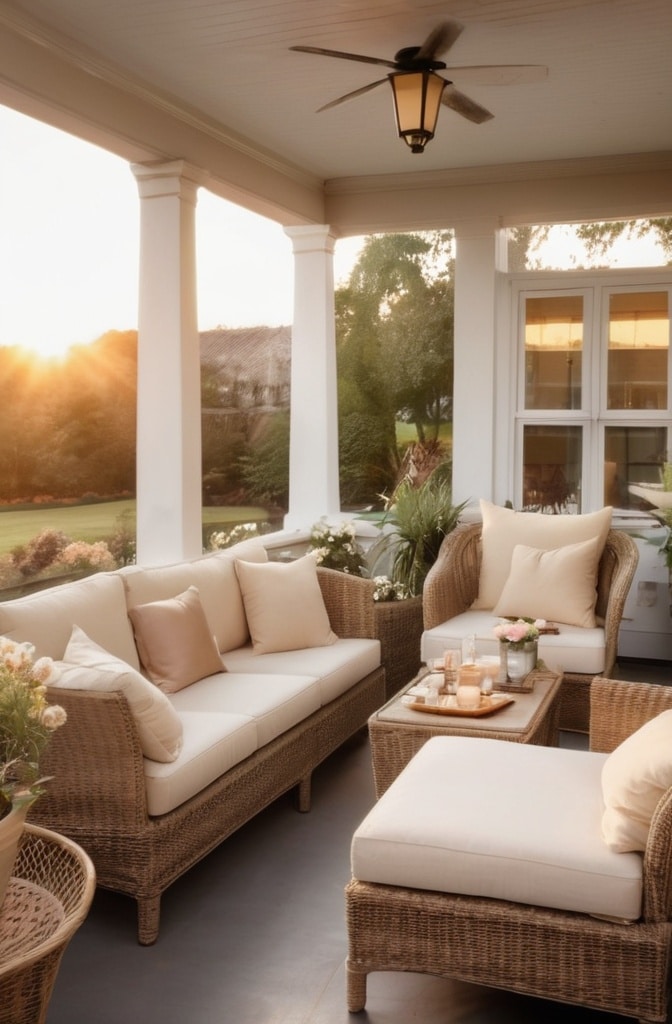
An accent wall provides an immediate focal point and opportunity for personal expression in modern entryways. Beyond basic paint, consider these contemporary options:
- Textured materials like fluted wood panels, acoustic felt, or dimensional tile
- Large-format wallpaper with bold geometric patterns or nature-inspired motifs
- Wood slat walls that add warmth and texture
- Plaster treatments like Venetian or tadelakt for subtle sophistication
“The entryway accent wall functions as a design thesis statement for your home,” explains designer Nina Magon. “It should relate to elements found throughout the interior while making its own distinct impression.”
For renters, removable wallpaper has revolutionized accent wall possibilities. Brands like Chasing Paper and Tempaper offer sophisticated designs that install and remove without damaging walls, perfect for temporary personalization.
6. Mirrors as Design Elements and Space Enhancers
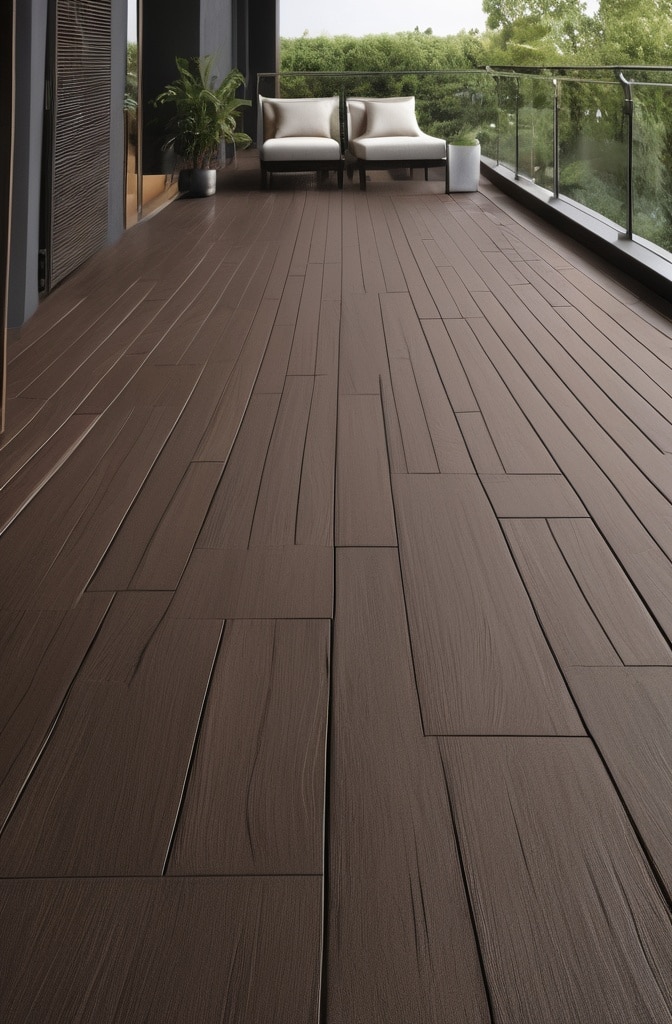
Mirrors remain essential in modern entryways, serving both practical and aesthetic purposes. Strategic mirror placement can dramatically enhance your space by:
- Reflecting natural light to brighten dark entryways
- Creating the illusion of expanded space
- Providing a last-minute appearance check before exiting
- Adding decorative interest through frame design
Shape psychology plays a subtle but important role in mirror selection. According to interior designer Kelly Wearstler, “Round mirrors soften spaces with many straight lines and hard surfaces, while geometric shapes can add architectural interest to simpler spaces.”
For maximum impact, position mirrors to reflect something worth seeing—ideally natural light, greenery, or an attractive interior view rather than blank walls or clutter.
Functional Elements That Don’t Sacrifice Style
Modern entryway design excels at merging practicality with aesthetic appeal. These key functional elements can be both beautiful and useful.
Read This Blog: https://hometranquil.com/stylish-and-cozy-home/
7. Console Tables: The Entryway Workhorse
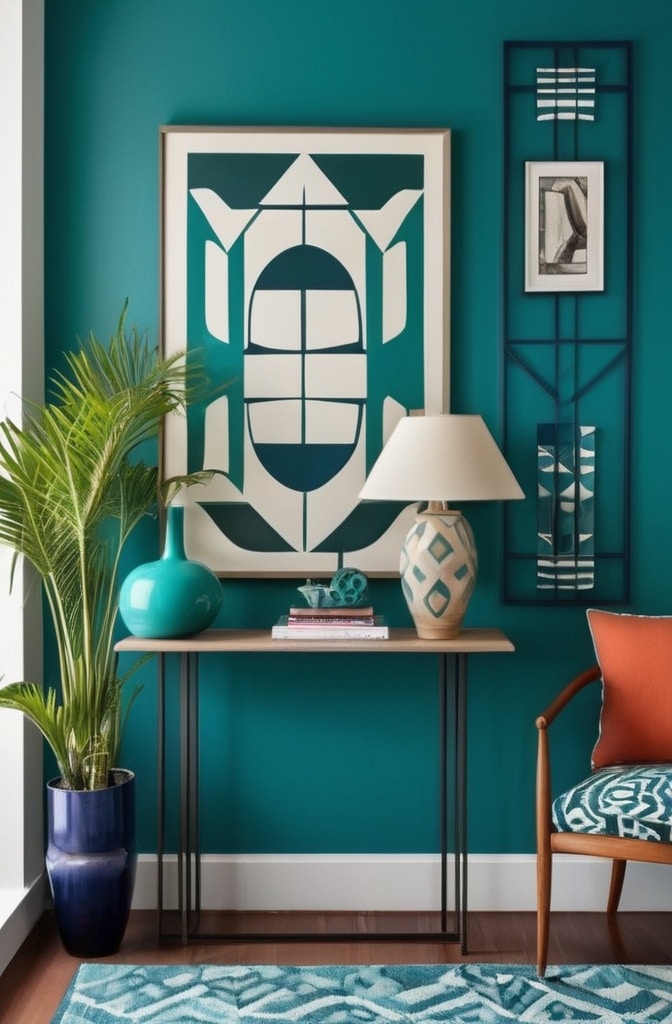
The console table often serves as the anchor piece in modern entryways, providing surface area for both display and daily essentials.
“When selecting a console, proportion is everything,” notes furniture designer John Derian. “The ideal depth is between 12-15 inches for most entryways—deep enough to be useful without impeding traffic flow.”
For proper scaling:
- Length should be approximately 1/2 to 2/3 the width of the wall it’s placed against
- Height should be 30-36 inches for standard ceiling heights
- Allow at least 3 feet of clearance space in front for comfortable passage
Material trends for 2025 favor mixed-media consoles that combine materials like:
- Warm woods with metal accents
- Natural stone tops with wooden or metal bases
- Recycled or reclaimed materials for sustainability
- Glass elements for visual lightness in smaller spaces
When styling your console surface, follow the rule of three: group items in odd numbers (preferably three) at varying heights for visual interest without clutter. Include something tall (like a table lamp or vase), something medium (perhaps a small plant or photo frame), and something low (a decorative box or tray for keys).
8. Seating Solutions: Beyond the Basic Bench
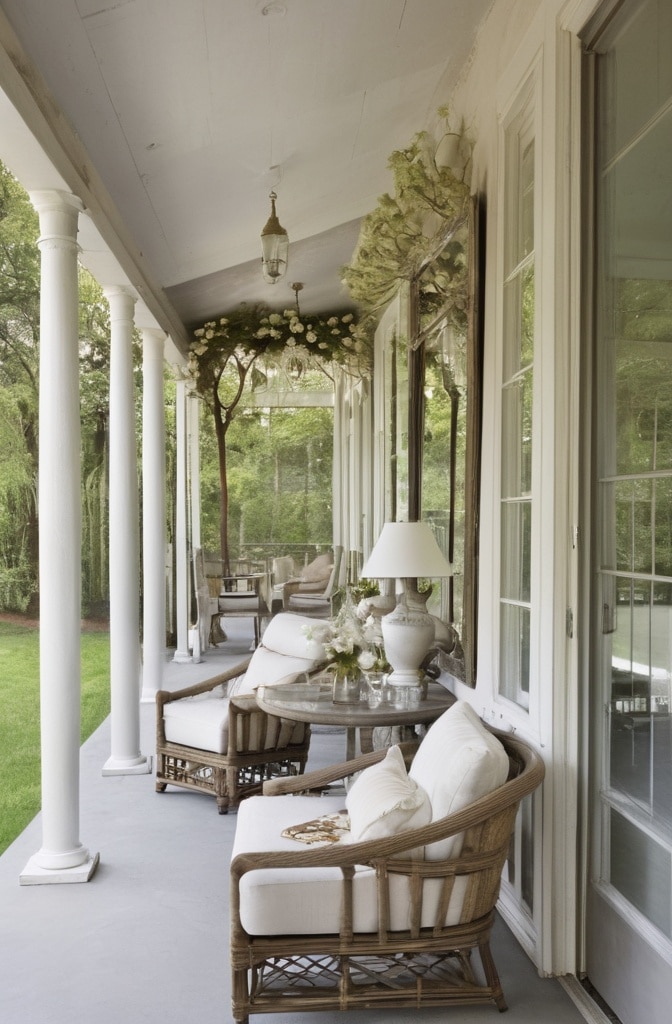
Seating in an entryway serves both practical purposes (a place to sit while putting on shoes) and aesthetic ones (adding softness to what’s often a hard-surfaced area).
Space-saving innovations for modern entryway seating include:
- Wall-mounted folding benches that can be tucked away when not in use
- Narrow ottomans that can slide under console tables
- Nesting stools that can be separated when needed
- Corner benches that maximize awkward spaces
“The entryway bench is often the most-used seating in the home, so durability should be prioritized,” advises upholstery expert Amanda Brown. For high-traffic areas, look for performance fabrics with a minimum of 30,000 double rubs on the Wyzenbeek abrasion test.
Double-duty designs offering hidden storage have become increasingly sophisticated. The Container Store reports that sales of storage benches increased by 45% between 2020-2024, reflecting growing consumer interest in multifunctional entryway furniture.
9. Intelligent Storage Systems for Clutter-Free Entrances
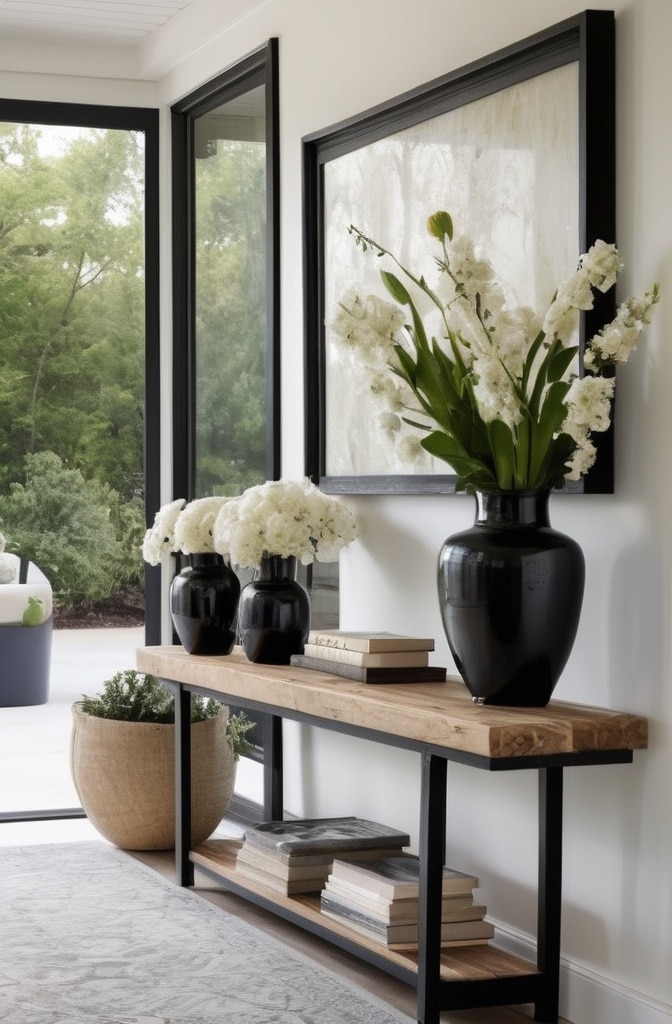
Effective storage is what separates merely attractive entryways from truly functional ones. Modern entryway storage solutions focus on accessibility, organization, and visual integration with the overall design.
Vertical storage maximizes wall space through:
- Floating shelves with hidden brackets
- Wall-mounted cabinets that don’t consume floor space
- Hook systems at varying heights for different household members
- Pegboard systems that can be reconfigured as needs change
Custom built-ins offer the most tailored storage solutions but require greater investment. Modular systems from companies like IKEA, Elfa, and California Closets provide semi-customized options at more accessible price points.
Organization specialist Marie Kondo advises, “Designate specific homes for categories of items—keys, mail, bags, shoes—and establish rituals for placing things in their proper locations upon entering.” This simple practice dramatically reduces entryway chaos.
10. Shoe Storage That Actually Works
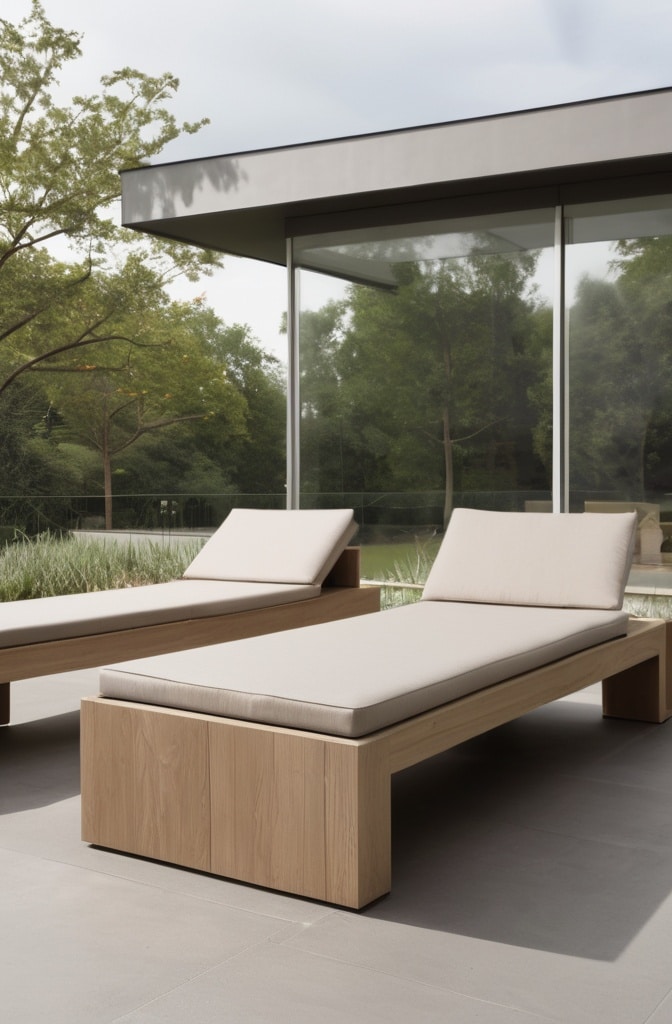
Footwear management presents one of the greatest challenges in entryway design. According to a 2023 survey by HomeGoods, the average American household has 19 pairs of shoes in active rotation, requiring significant storage consideration.
Professional organizer Shira Gill recommends calculating your shoe storage needs based on household demographics:
- Adults: 5-7 pairs per person in seasonal rotation
- Children: 3-5 pairs per child in current size
- Plus 1-2 pairs per person for guests/special occasions
“Ventilation is crucial for shoe storage,” notes Gill. “Enclosed cabinets should include ventilation holes or mesh panels to prevent odor buildup, particularly in damp climates.”
Modern shoe storage solutions include:
- Tiered cabinets with pull-down fronts for visibility
- Vertical shoe walls with adjustable shelves
- Under-bench cubbies with removable bins
- Rotating carousel systems for corner optimization
Adding Personality and Warmth
A truly inviting modern entryway balances clean lines and functionality with elements that add character and warmth.
11. Biophilic Elements: Bringing Nature Inside
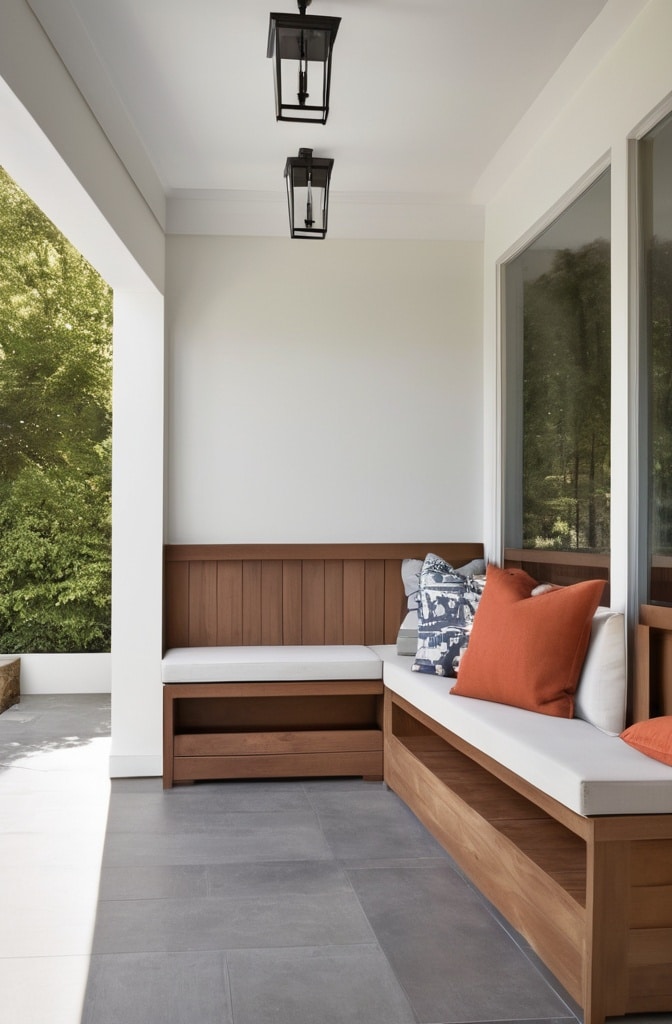
Incorporating natural elements into entryway design connects with our innate affinity for nature—a concept known as biophilia. Studies from the University of Washington show that even brief exposure to natural elements can reduce stress and enhance mood—an ideal welcome home.
For entryways with variable light conditions, these plant varieties thrive:
- ZZ plants (Zamioculcas zamiifolia) for low-light areas
- Snake plants (Sansevieria) for neglect-tolerance
- Pothos varieties for versatility and air-purifying qualities
- Ferns for humidity-loving environments
For dramatic impact, living wall installations have become more accessible with modular systems from companies like LiveWall and Sagegreenlife. These vertical gardens create stunning focal points while improving air quality.
If maintenance concerns or light limitations make live plants impractical, high-quality artificial options have improved dramatically. Look for varied textures, irregular growth patterns, and subtle color variations—hallmarks of realistic faux plants.
12. Textile Integration for Acoustic Benefits
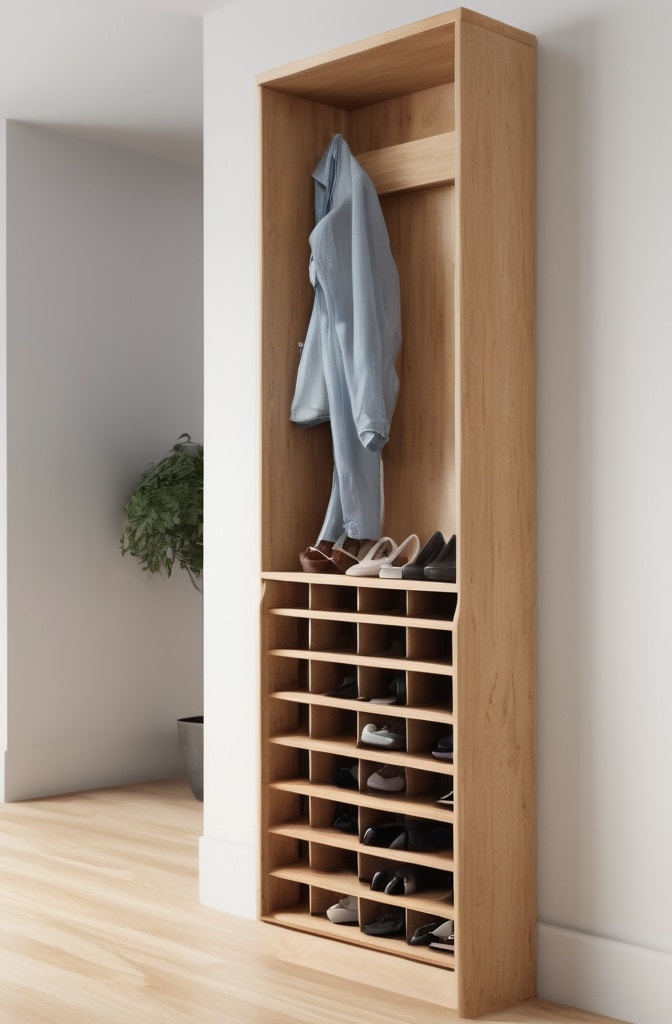
Textiles add warmth, color, and crucial acoustic benefits to entryways, which often suffer from sound reverberation due to hard surfaces.
A well-placed entryway rug serves multiple functions:
- Defines the space visually
- Captures dirt and moisture from shoes
- Reduces noise transmission
- Adds color and texture
“In entryway rug selection, practicality must lead,” advises rug designer Ben Soleimani. “Opt for low-pile construction in dark, variegated patterns that conceal inevitable soil, and natural fibers like wool that clean easily and wear beautifully.”
Performance fabrics have revolutionized entryway textiles, with solution-dyed acrylics and treated natural fibers offering unprecedented durability. Brands like Perennials and Sunbrella now produce indoor-outdoor fabrics elegant enough for entryway upholstery while withstanding the elements brought in from outside.
13. Art Selection That Sets the Tone
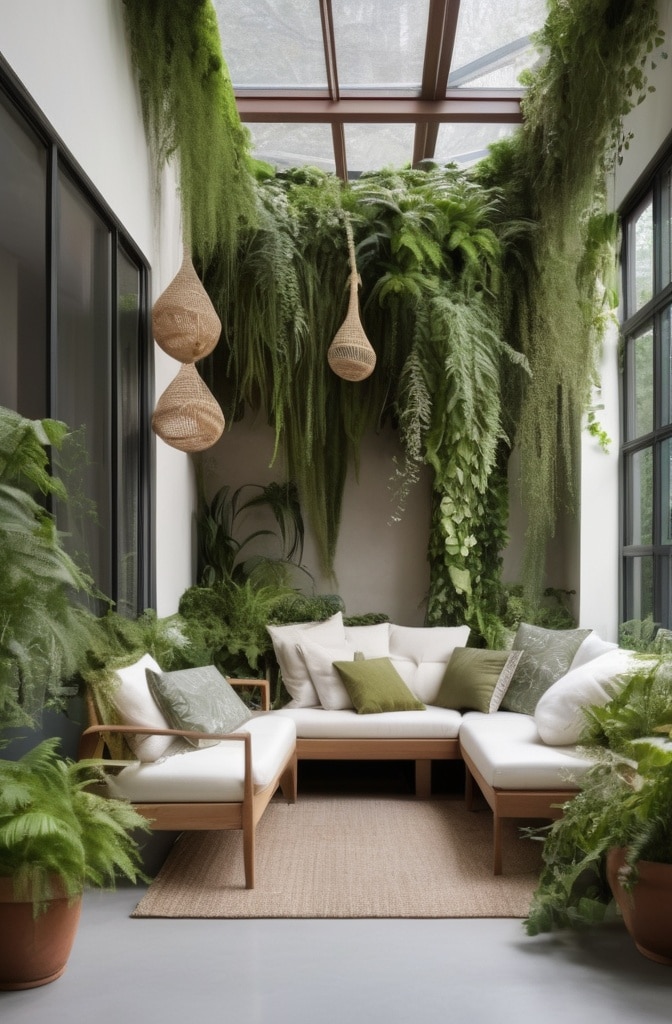
Art in the entryway offers an immediate glimpse into your home’s personality. “Entryway art should intrigue rather than overwhelm,” suggests gallery owner Melissa Watts. “It should invite closer inspection without requiring lengthy contemplation.”
For maximum impact:
- Choose pieces that can be appreciated quickly
- Consider scale—generally larger is better than too small
- Ensure proper lighting with picture lights or well-placed spots
- Select framing that complements rather than competes with the artwork
For protection in variable-condition entryways, consider:
- UV-protective glass for sun-exposed locations
- Properly sealed frames to prevent moisture damage
- Metal or canvas pieces in areas prone to humidity fluctuations
- Avoiding delicate media like watercolors in uncontrolled environments
Gallery-inspired hanging techniques can elevate even simple collections. The “museum method” positions artwork with the center at 57-60 inches from the floor—the average human eye level—creating a consistent viewing experience.
14. Natural Elements: The Warmth of Wood
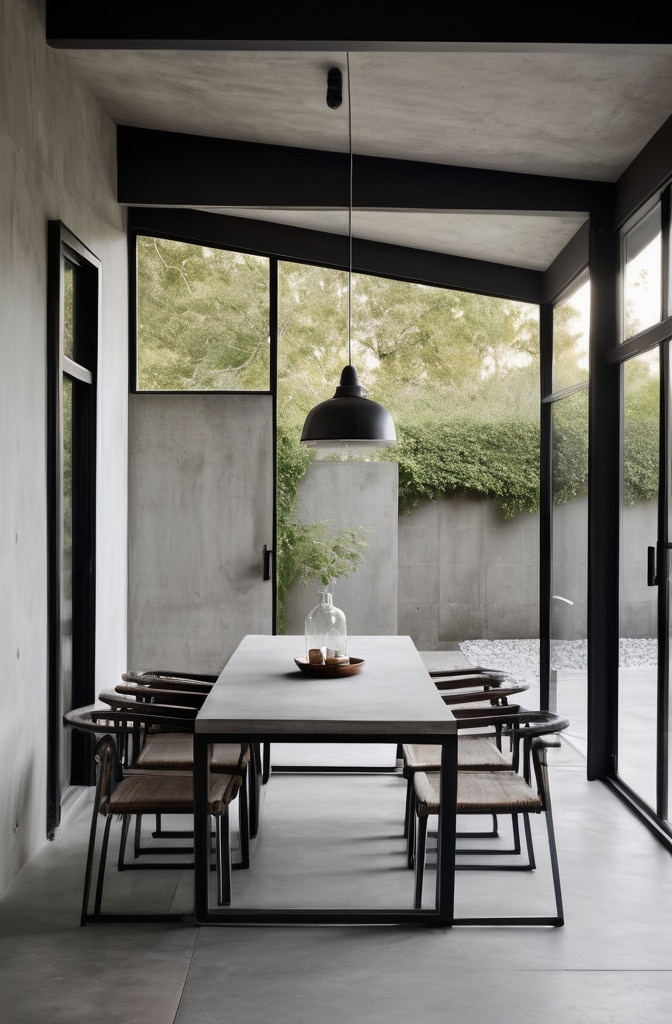
Wood elements bring irreplaceable warmth and organic texture to modern entryways. “Wood creates an immediate connection to nature and softens what might otherwise feel like a transitional space,” explains sustainable design expert Laura Hodges.
Current trends favor:
- Sustainable options like bamboo, cork, and reclaimed woods
- Light to medium wood tones for Scandinavian-inspired spaces
- Rich walnut or mahogany for more traditional settings
- Mixed wood tones for eclectic, collected looks
When incorporating wood elements, consider:
- Moisture exposure—choose more resistant species for humid areas
- Maintenance requirements—some finishes require more upkeep than others
- Coordination with existing wood tones throughout connecting spaces
- Contrast potential—light woods pop against dark walls and vice versa
Modern Entryway Styles
The most successful modern entryways don’t simply follow trends but interpret established design languages to suit individual homes and lifestyles.
15. Industrial Modern: Raw Materials Meet Refinement
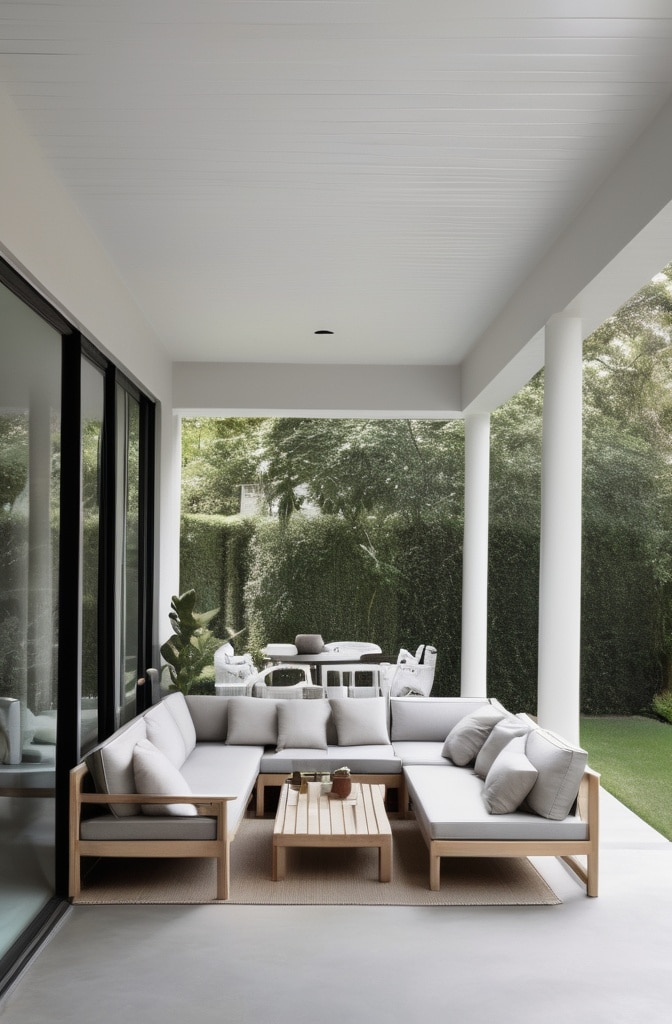
Industrial modern entryways blend raw, utilitarian elements with refined details, creating spaces that feel both edgy and welcoming.
Key characteristics include:
- Exposed materials like concrete, brick, and metal
- Black metal accents in lighting fixtures and hardware
- Vintage or vintage-inspired furniture with modern lines
- Contrast between rough and smooth textures
Designer Jean Stoffer transformed a featureless suburban entryway into an industrial showcase by adding a steel-framed glass partition, concrete-look tile, and black metal light fixtures. “The key was balancing the industrial elements with softer touches like a vintage Persian runner and warm wood console to keep the space from feeling cold,” Stoffer notes.
Lighting fixtures play a crucial role in industrial modern entrances. Look for:
- Factory-inspired pendants with exposed bulbs
- Articulating wall sconces with visible hardware
- Cage-enclosed fixtures that reference utility lighting
- Matte black or aged brass finishes
16. Minimalist Approach: Less Really Is More
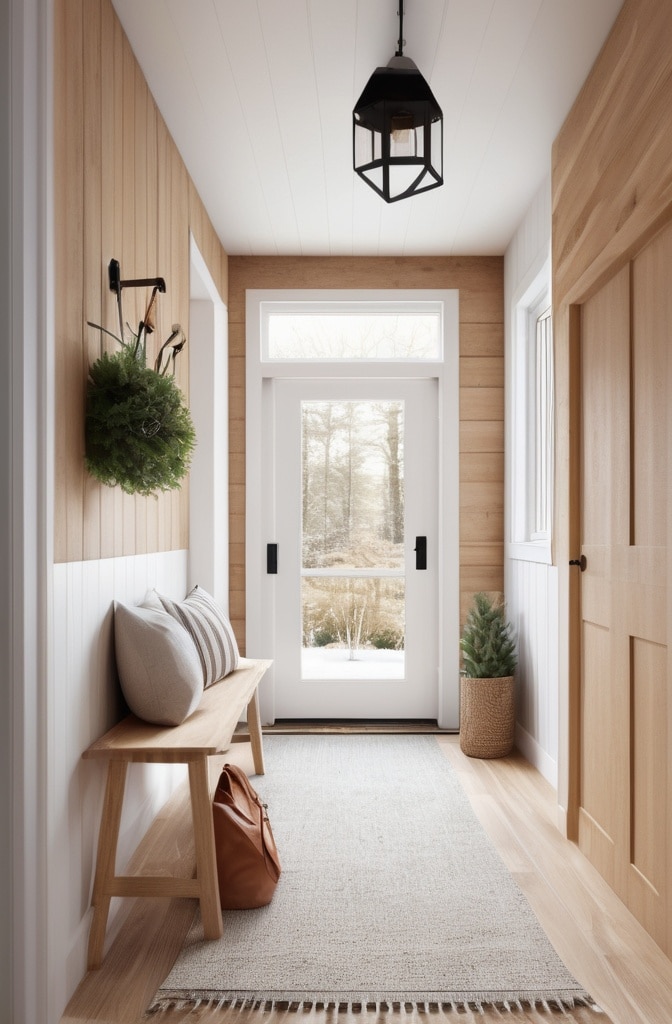
Minimalist entryways focus on essential functionality, clean lines, and breathing room. This approach particularly benefits smaller spaces where visual clutter can quickly overwhelm.
The essential elements for functional minimalism include:
- A streamlined surface for keys and mail
- Hooks or hidden storage for outerwear
- A mirror for last-minute checks
- Perhaps one carefully chosen decorative element
“Minimalism isn’t about deprivation but intention,” explains designer John Pawson, renowned for his minimalist spaces. “Every element should earn its place through either beauty or utility—ideally both.”
Creating visual interest in minimalist entryways relies on texture rather than objects:
- Textured plaster walls provide subtle dimension
- Linen curtains add softness and movement
- Wooden elements bring natural variation and warmth
- Contrast between matte and polished finishes creates depth without clutter
17. Scandinavian Influence: Hygge in the Entryway
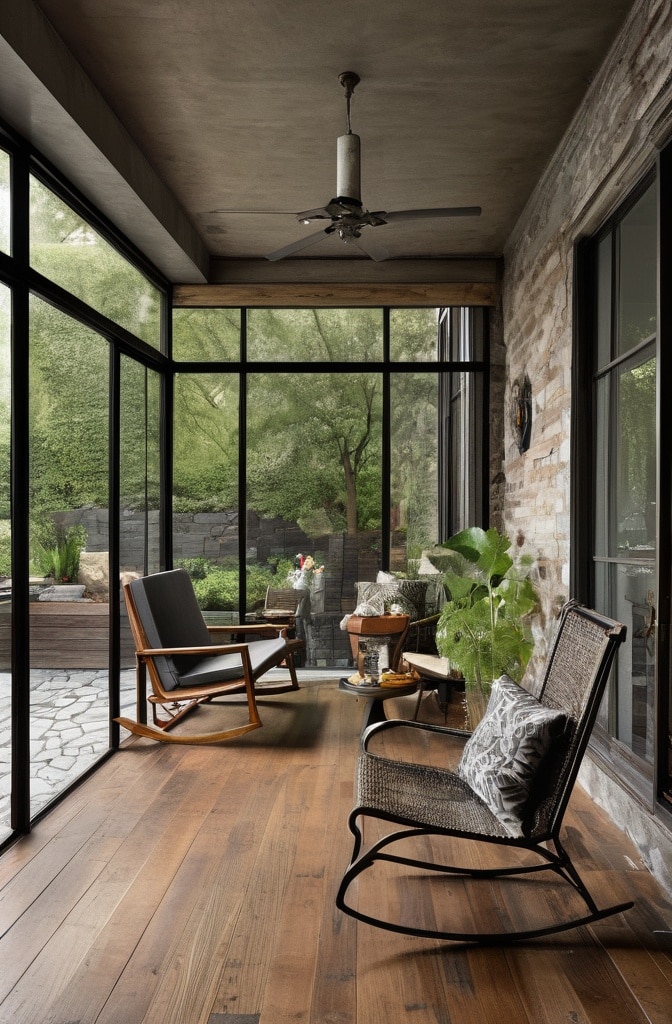
Scandinavian-inspired entryways blend simplicity, functionality, and coziness—embodying the Danish concept of “hygge” (pronounced hoo-ga), which roughly translates to a feeling of contentment and well-being.
Natural materials form the foundation of Scandinavian entryways:
- Pale woods like ash, oak, and birch
- Natural stone or porcelain with organic patterning
- Woven elements like rattan, jute, and wool
- Living greenery for connection to nature
Light maximization techniques reflect Scandinavians’ response to long, dark winters:
- Light-reflective pale color palettes
- Minimal window coverings to maximize natural light
- Strategically placed mirrors opposite windows
- Warm-toned lighting to counteract cold northern light
“The Scandinavian entryway succeeds when it feels like a warm embrace upon entering,” says Swedish interior architect Pella Hedeby. “This comes from a balance of practicality and beauty, with nothing unnecessary but nothing cold or unwelcoming either.”
as 18. Contemporary Fusion: Mixed Materials and Eras
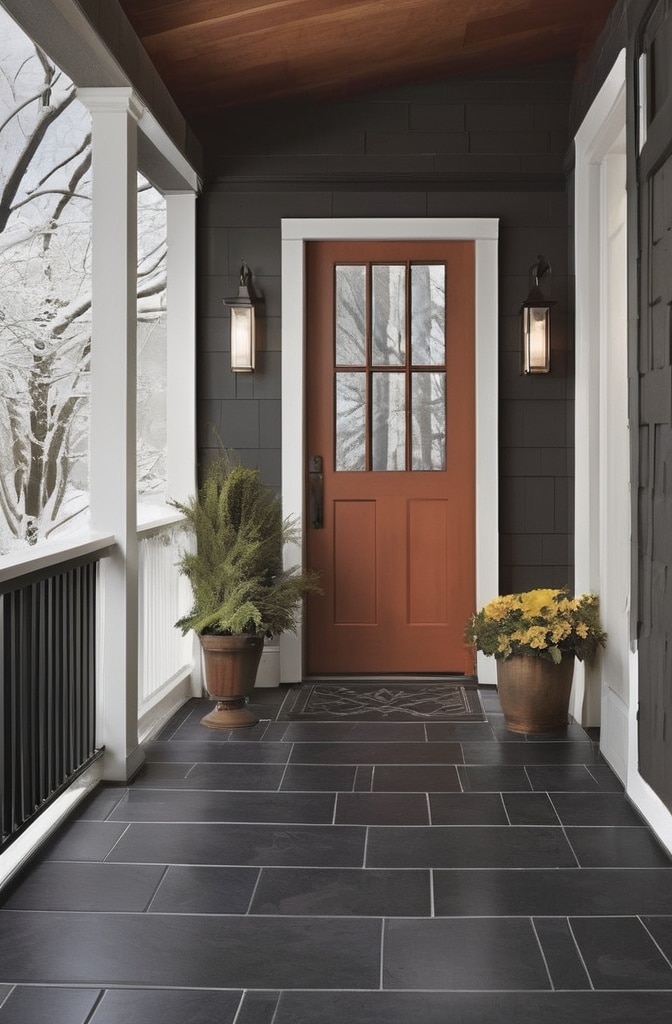
Perhaps the most versatile modern entryway approach, contemporary fusion mixes elements from different design eras and materials for a collected, personal feel.
Successful fusion entryways typically include:
- A mixture of new pieces and vintage finds
- Varied materials that share commonalities (either color, texture, or shape)
- A unifying color palette that ties disparate elements together
- Statement pieces that anchor the design
Designer Amber Lewis, known for her contemporary fusion interiors, advises, “When mixing styles, maintain a consistent color story and ensure each piece has room to breathe. Too many statement pieces create visual chaos.”
For cohesive looks when combining periods:
- Link pieces through repeated shapes or motifs
- Use contemporary art with vintage furniture or vice versa
- Choose one dominant style with elements from others as accents
- Apply consistent hardware finishes across different furniture pieces
Smart Solutions for Common Challenges
Even the most beautiful entryway fails if it doesn’t address practical challenges specific to your lifestyle and location.
19. Weather-Ready Entryway Design
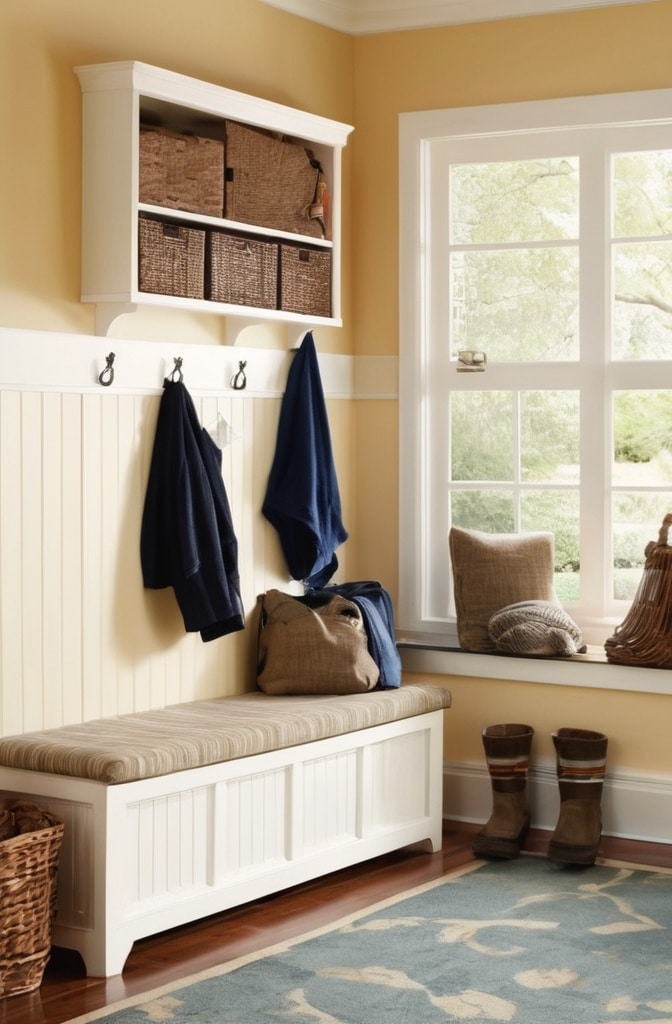
Regional weather patterns should significantly influence entryway design decisions. What works in arid Arizona will differ dramatically from needs in rainy Seattle or snowy Minnesota.
For high-moisture regions:
- Incorporate water-resistant flooring like porcelain or luxury vinyl
- Include a designated wet area for umbrella storage
- Install hooks at varying heights for wet outerwear
- Choose moisture-resistant materials for furniture and décor
For extreme temperature regions:
- Create a thermal transition zone with insulated elements
- Include storage for seasonal gear (heavy coats, boots, etc.)
- Consider heated flooring for cold-climate comfort
- Incorporate shoe and boot storage that allows for drying
Material selection specialist Maya Henderson notes, “Many homeowners underestimate moisture management in entryways. Even in seemingly dry climates, the occasional rainy day can damage improperly specified materials. Always design for worst-case scenarios.”
20. Family-Friendly Entryways That Actually Work
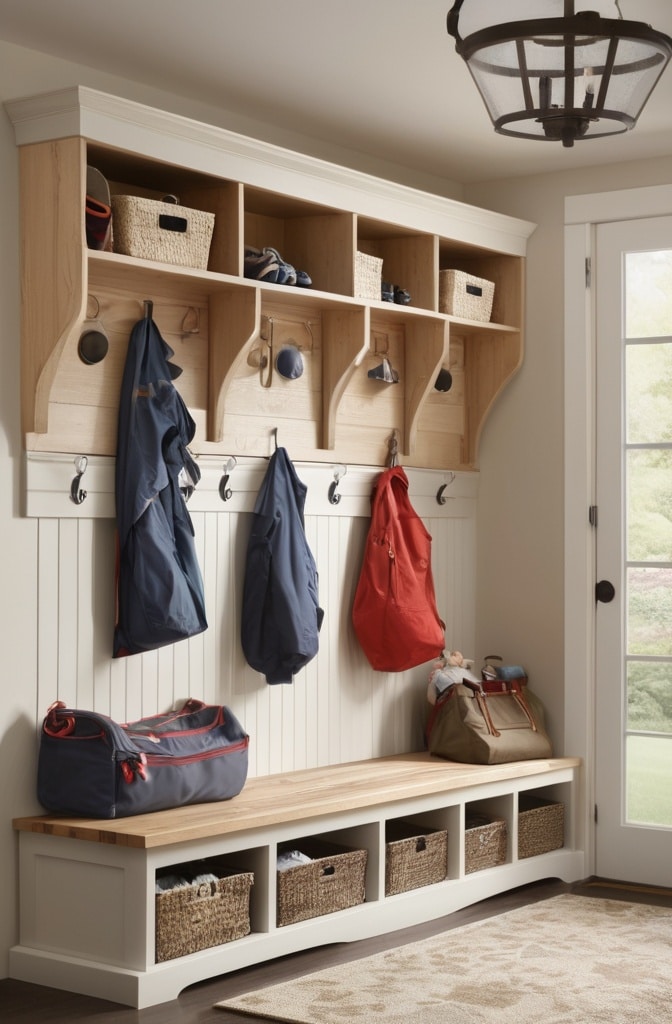
Family entryways must balance style with intense daily use by household members of all ages. Thoughtful design can significantly reduce morning chaos and evening clutter.
Height-adjustable solutions accommodate growing children:
- Stepped hook systems at multiple heights
- Label systems that can evolve with reading abilities
- Storage that transitions from parent-managed to child-accessible
- Bench seating that works for all family members
“Family entryways function best with personalized zones,” advises organization expert Clea Shearer of The Home Edit. “Assign specific areas for each family member, clearly labeled and at appropriate heights, to create accountability and reduce daily friction.”
Child development psychologist Dr. Amanda Gummer observes, “Well-organized entryways can teach children executive functioning skills like planning and responsibility. When children know exactly where their belongings go, they develop independence and confidence.”
Conclusion
The modern entryway represents far more than a transitional space—it’s the daily interface between your public and private selves, between the outside world and your sanctuary. By thoughtfully addressing both form and function, today’s entryways enhance daily living while making a style statement.
Interior designer Nate Berkus perhaps said it best: “Your home should tell the story of who you are, and be a collection of what you love.” Nowhere is this more immediately evident than in your entryway.
Whether you implement a single idea or a complete transformation, focus on creating an entrance that welcomes you home while efficiently serving your daily needs. After all, the best entryway design is one that looks beautiful while making your life easier every single day.
For additional resources:
- National Association of Home Builders: www.nahb.org – Research on entryway dimensions and layouts
- American Society of Interior Designers: www.asid.org – Professional designer directory by region
- Houzz.com: Searchable database of entryway photos filtered by size, style, and budget
- Pinterest.com: Create mood boards to visualize your entryway design before implementation
